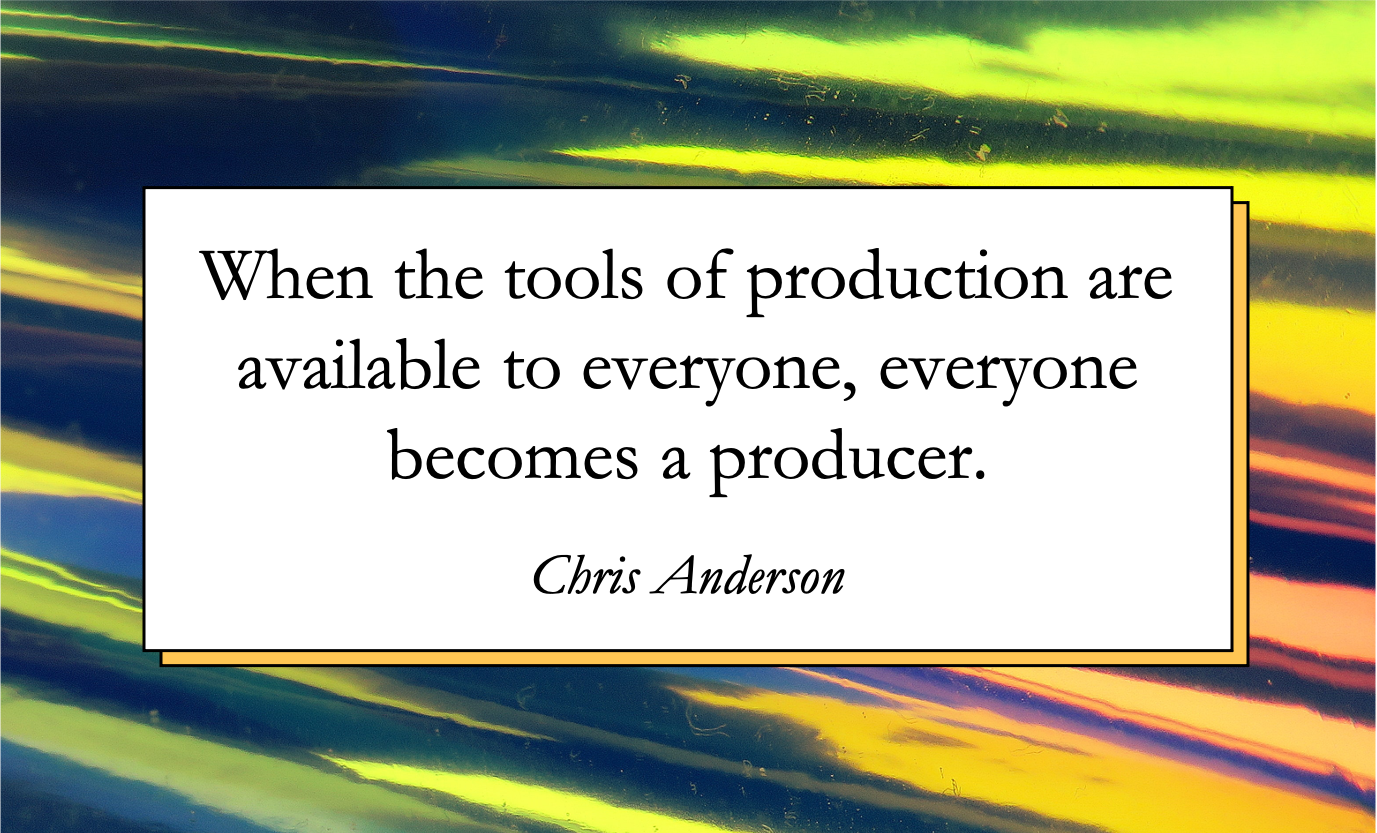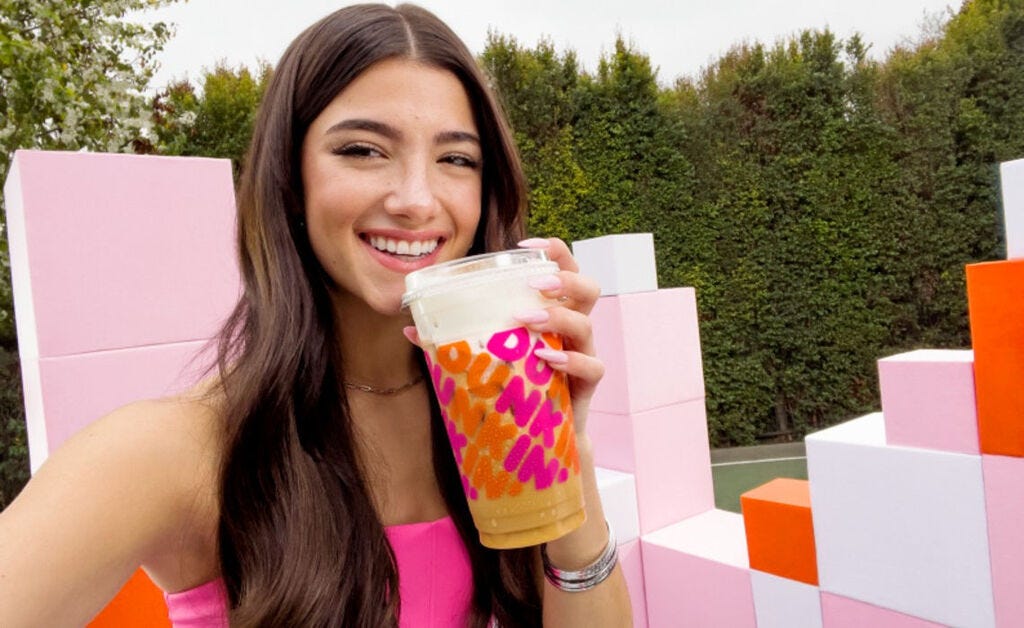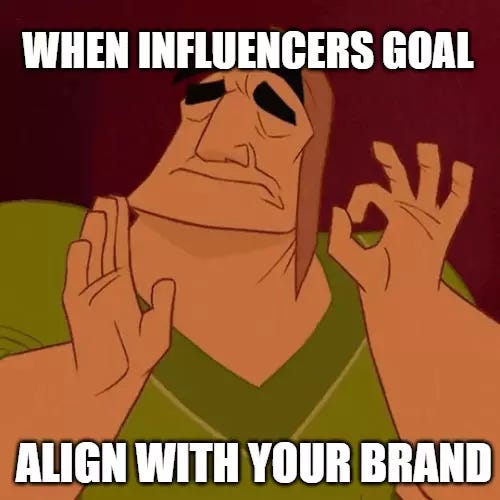👩🎤 Influencer-Marketing
What role do influencers play in the marketing mix and how do successful collaborations come about?
Hello 👋 My name is Florian Schleicher and this is the FutureStrategies newsletter from FutureS. I'm glad you're reading along 💚 If you want to learn strategic marketing, my Simple & Sustainable Marketing Academy is just right for you
One of the major changes that the Internet has brought to our communications culture has been the new ability to build a large reach for anyone and everyone.
From the combination of the new sender-receiver role distribution, in combination with the interactivity of our new screens and the new expert status, a new industry was born: Influencers.
For classification, a small definition from the Influencer Marketing Hub:
"Influencers are people who have the power to influence the buying decisions of others based on their authority, knowledge, position, or relationship with their own audience."
Or even shorter:
"Influencers build their reach through a curated and styled profile and make money through sponsorships and collaborations."
🗿 Days of futures past
But the basic principle is not new: at the beginning of human history in all cultures there were gods and heroes, whose stories gave us advice for life.
In the sagas of the Middle Ages, praises are sung to role models. And Hollywood stars or TV show hosts are still popular testimonials of advertising campaigns.
However, we can see a clear trend here:
The quest for more authenticity.
A great example is the story of Oprah Winfrey, who had an impact on Americans for years. In an interview with the audio platform Acquired, the world-famous talk show host talks about a conversation she had with her producer early in her career:
Oprah: You know I’m black?
Producer: Yeah, I can see that.
Oprah: You know I’m overweight?
Producer: So are many Americans.
“So are many Americans.” - sometime later, he also adds You are America - that’s the whole point.”
And that's what the basic principle of influencers is all about - building closeness by being able to find me in another person.
💗 The market is growing
This brings us to today's starting point: the cost of reaching a large number of people digitally is rising ever higher.
Placing traditional advertising on Google, YouTube, Facebook, or even TikTok and Snapchat costs more and more.
That's why marketers are looking for new ways to do marketing.
And many are turning to influencer marketing: in 2021, the market size was USD 13.8 billion, with annual growth of around 40%.
Influencers now have a huge market position, and becoming one is also a career aspiration for many young people.
But the story (unfortunately) doesn't end there. The initial hype on the new opinion leaders is in the process of changing.
Because while trust in influencers was high at the beginning, it is now already declining again.
“No I don't really trust them, I think they are only promoting things because they make money or commission from them.”
Many feel the same way: A survey by the agency Bulbshare across 12 countries shows that only 35% of consumers still trust influencers to be authentic.
84% even reject influencer content and want "real" voices.
And that has created a new exciting opportunity:
🐾 Micro-Influencer - Small but mighty
“Much of the growth in influencer marketing—and much of the remaining opportunity—comes not from the bold-faced names, but from the content creators with 10K, 1K, or even 500 followers.”
At this point, a brief classification of terms for the German-speaking area:
Micro-influencers have the largest share with approx. 43% in Germany, followed by 35% who are nano-influencers. In Austria, there are 2 mega-influencers with over 1.5 million followers.
But back to the rise of micro-influencers: it's actually quite clear - brand or product recommendations from "smaller" influencers are also perceived as more authentic according to studies. This perception then transfers to the advertised products, especially if they are hedonistic items.
♟ Influencers with strategy
Influencer marketing understands the promotion by celebrities in the digital space. It is important to remember that good collaborations consist of brands and influencers working together.
Otherwise, authenticity will be difficult.
Micro-influencers have a great advantage that is also exciting for brands:
They can occupy niches because they don't have to create every piece of content for the masses. Therefore, there are suitable multipliers for (almost?) every aspect of corporate marketing that can be activated.
Austrian brands have also already recognized this potential:
"Micro-influencers are especially interesting for smaller brands due to the lower cost factor. However, large brands are also increasingly relying on micro-influencers. They are very popular because of their authenticity and expertise in specific areas of interest. They have fewer followers, but a comparatively high engagement rate."
Sandra Stichauner, Team Lead BIPA Online Marketing
I recommend considering three key ideas when developing an influencer strategy:
Authenticity - How can we ensure that the cooperation remains as genuine as possible and thus builds closeness? This starts with the selection of the influencer, which must be strategically planned with the own target group, and goes through the right channels to the planning of the content.
Approach - Influencers can play an important role in the marketing mix, so they also need individual communication with the company. Who can provide this internally?
Remuneration - Is a contribution simply paid or is there a success-based (non-)monetary system? There are always new exciting approaches developing here that can be taken into account.
👀 Show me more
A very subtle micro-influencer approach is taken by Coca-Cola, for example, which pays a variety of influencers to include the iconic brand in their regular posts - without mentioning it much:
Cosmetics company Glossier has also taken a similar approach - they work with over 500 micro-influencers who post their beauty routines and products they like.
Through their own referral program, they are rewarded with discounts or other non-monetary benefits. The focus is always on the "real life" of people like those next door.
Ideally, influencer marketing creates a symbiosis, as Glossier founder Emily Weiss describes:
“Our customers are our number-one mouthpieces and evangelists. They are doing exactly what we hoped they would. They are interpreting Glossier.”
A holistic marketing strategy recognizes the added value and the opportunities as well as risks of influencer collaborations. Used well, proximity to the target group can be established and a new sales channel can be created. This requires a lot of planning and an unerring concept.
Marketing with and through influencers involves two changes of perspective - that of the target group and that of the multipliers, both of whom have their own needs.
Ideally, the two overlap - and that's when the result is really good marketing.
Looking for more reading stuff?
🏁 5 steps for successful start-up marketing - What makes a start-up successful? A guide with practical examples.
🗞 Using PR for start-up success - Interview with storyteller Gregor Fauma - including the 5-sentence model, tips on pitches, and successful PR
🌍🔜 The future is impact marketing - How will sustainable impact on planet, profit & people shape companies in the future, and what is impact marketing?
PS: You can also read this posting in German.









